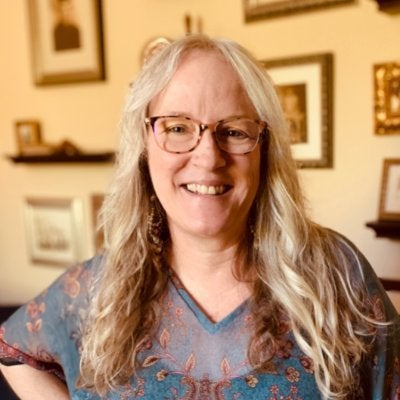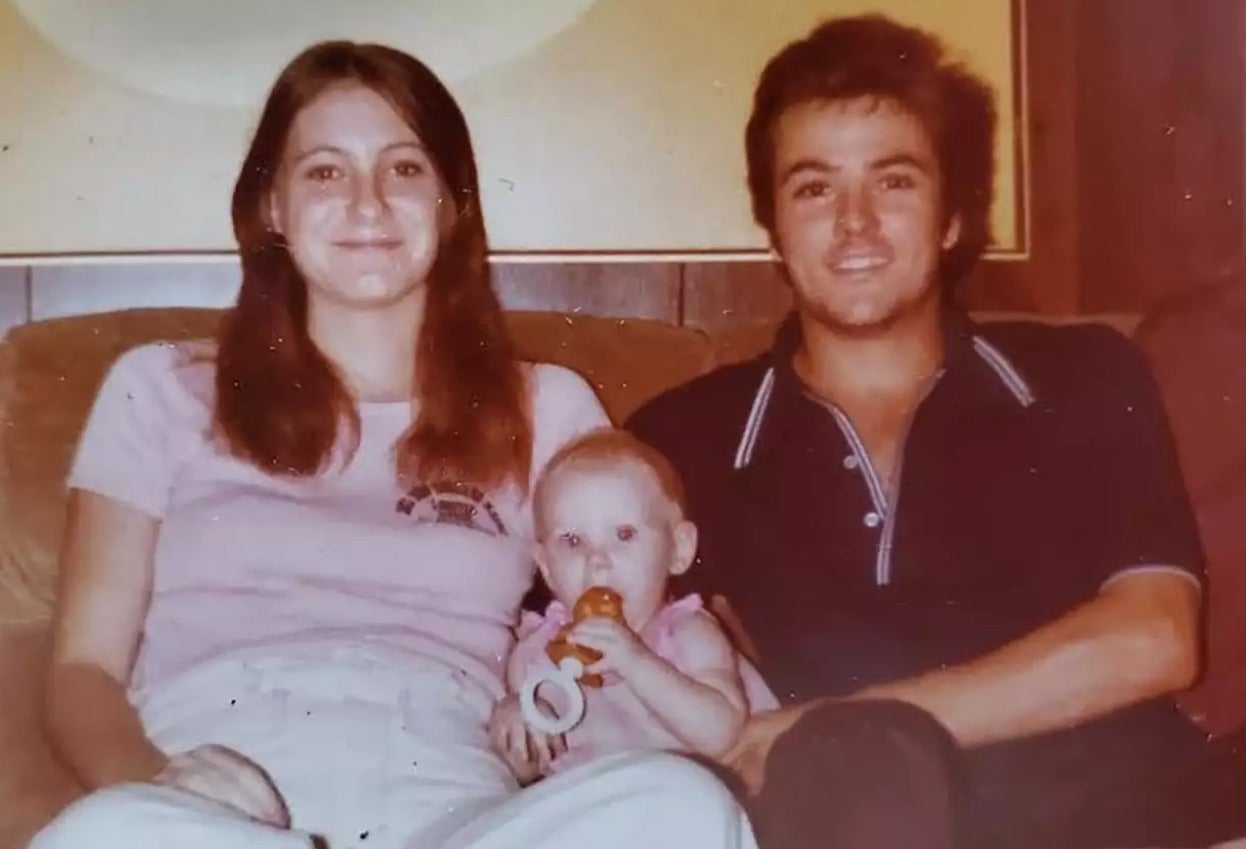Finding Baby Holly was ‘a miracle,’ says genealogist who helped solve the 40-year-old mystery
EXCLUSIVE: Two genealogists helped ID murder victims found more than 40 years ago – and track down the couple’s missing baby the researchers only learned about from relatives, Sheila Flynn reports

Allison Peacock became a genealogist for two reasons. First, she loved solving puzzles; second, she wanted to help connect and impact families.
When she took on a John and Jane Doe case with a fellow genealogist last year, she had no idea it would achieve both of those career goals beyond her wildest dreams.
They not only identified a couple who’d been found slain in 1981 in a wooded area near Houston; they also discovered, when they learned their names, that the couple’s baby had been missing since they vanished – and the genealogists helped authorities track her down.
“Baby Holly” was found alive and well, notified by authorities this week at her work in Oklahoma about her biological family.
“I found out like 10 minutes after they talked to her,” Ms Peacock tells The Independent, adding that investigators sat down at the woman’s place of employment and “texted me a picture of her and said, ‘Look who we found.’”
She says the long-lost Baby Holly “reacted in such a way that, six hours after being met by these detectives in her place of employment, we were on a video conference hosted by the attorney general’s office with about 25 of her family members and detectives and both genealogists – and she was just open to it.”
The happy reunion came about through a fortuitous confluence of events, Ms Peacock says – and almost didn’t happen.

Her genetic research company, based in Austin, was subcontracted last year to a California-based company called Identifinders International. There, another genealogist, Misty Gillis, became interested in a decades-old John and Jane Doe case.
“We would sometimes let the genealogists go out and find a case they saw on the internet that they liked, like a John Doe or a case that was unsolved,” Ms Peacock tells The Independent. “Most of the time, we take cases that walk in the door, but we get our pet cases.
“Somebody said, ‘Let’s do this man and wife; it might be a couple.’ So we reached out to [Texas authorities] and asked if they had DNA on hand for this couple, and they did, and then we were lucky enough to get a grant.”
They first began looking into the case last spring; by autumn, using their DNA technology and uploading information to Gedmatch.com, a genealogy site that allows users to share data with law enforcement agencies, they’d come up with IDs.
The man and woman were identified as Tina Linn Clouse and her husband, Harold Dean Clouse, who were last heard from by family in October 1980. At the time, they’d relocated to Texas from Florida and were living near a Dallas suburb with their infant daughter, Holly Marie.
Ms Peacock and her colleague, when they called the Clouses’ family in October to break the news that their missing loved ones had been identified, had no idea there’d been a child.
“I was shocked to even know there was a baby,” Ms Peacock tells The Independent. “And it was 30 seconds after I told Dean’s sister that he had been murdered she said: ‘Well, what about his baby?’
“And I was like, “Wait – what?!” I was breathless ... because all of the implications hit me all at once: Okay, if the couple was murdered and their baby wasn’t with them ...
“It was overwhelming,” she says.
The timing turned out to be perfect; Texas Attorney General Ken Paxton’s newly formed Cold Case and Missing Persons Unit began taking cases in December. The murders of the Clouses – and the fate of their baby girl – became one of them.
Ms Peacock, who is the founder of FHD Forensics, joined forces with investigators, she tells The Independent.
“In December, January and February, I talked to the investigators on a weekly basis,” she says. “I helped them; they helped me. I ended up taking on the Holly Marie side of the case ... this was just strictly kind of a humanitarian thing.”
She adds: “I helped them pull records they didn’t know how to pull; we screened a bunch of women that came forward” as possible Hollys after news broke earlier this year thatat the Clouses had been identified as murder victims – and their baby remained missing more than four decades later.
She had a feeling there might be a major development in the case, she says, when the detectives “got quiet all of a sudden after talking several times a week.”
About two months ago, she says, “they kind of told me they couldn’t talk for a while, because they were under a gag order.”
She adds: “It took about two months for whatever they stumbled on” to be revealed, and “it involved people in three different states.”
The key that unlocked Baby Holly’s adult whereabouts and identity, she says, was completely removed from her line of work and the DNA testing of the handful of women who came forward.
“It had nothing to do with it,” she says. “That’s the thing that’s the most surprising.”
She adds: “It had to do with good, old-fashioned detective work and legal proceedings. It was the kind of thing that was perfectly in the wheelhouse of the team that took it over.”
She could not discuss further details of the investigation, because it remains open – and authorities are appealing for the public to come forward with information that could help solve the Clouses’ murders and Baby Holly’s mysterious journey.
On Thursday, Texas officials at a press conference revealed more details about the case.
“Baby Holly was left in a church in Arizona and was taken into their care,” First Assistant Attorney General Brent Webster said. “The family that raised Holly are not suspects in this case. Two women who identified themselves as members of a nomadic religious group brought Holly to the church. They were wearing white robes and they were barefoot.”
They said they were members of a religious group that believed in “separation for male and female members, practiced vegetarian habits and not using or wearing leather goods.”
The women “indicated they had given up a baby before, at a laundromat.
“It is believed that this particular group travelled around Southwest United States, including Arizona, California and possibly Texas. There were sightings of this religious group around Yuma, Arizona in the early 1980s. The women members would be seen around town at various points, asking for food.”
“In late December 1980 or early January 1981, relatives of the Clouses received a phone call from someone identifying herself as ‘Sister Susan’ – who explained she was calling from Los Angeles, California and wanted to return Tina and Dean’s car to their family,” Mr Webster said. “She further stated that Tina and Dean had joined their religious group and no longer wanted to have contact with their families. They were also giving up all of their possessions.”
Mr Webster said the woman asked for money in exchange for returning the car; the family agreed but contacted local authorities. The missing couple’s relatives set up a meeting with “Sister Susan” at the Daytona Racetrack in Florida.
They encountered two or three women and “possibly one male,” Mr Webster said; the individuals also appeared to be members of the religious group.
Authorities “reportedly took the women into custody, but there is no record of a police report on file that has been found as of yet,” Mr Webster said – a situation not uncommon for such an old case.
The returned car belonged to the missing man’s mother; it was described as a 1978 two-door, red burgundy AMC Concord, Mr Webster said.
He added that authorities believed the couple “were likely murdered in December 1980 or early January 1981.”
“If you have any information regarding these murders, we ask that you come forward,” Mr Webster said. “Even if it’s a piece of information that may not be concrete evidence, we need to find pieces of the puzzle to solve this crime.”
He also said that the National Center for Missing & Exploited Children would be facilitating an in-person reunion for Baby Holly, who is married with five children, and her biological family.
Ms Peacock, for her part, describes the finding of the woman as “a miracle”.
She adds, however, that there are countless other families hoping for similar happy results.
“I am ecstatic, but at the same time, I just talked to a medical examiner yesterday that has 20 unidentified murder victims that we need to identify,” she tells The Independent. “And he doesn’t have the budget for it ... I’m thinking about the 20 or 30 or 40 or 50 other people I want to help.
“I’m thrilled about this case, but there are so many out there, when you know you have the technology to fix and to solve it.
“It’s hard not to be thinking about the next one and the next one and the next one.”
Stories like that of Baby Holly – as rare as they may be – help keep her going; the family keep in regular contact with updates and pictures of Holly.
“I love this family,” she tells The Independent. “I love hearing from them every day.”
